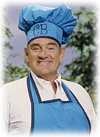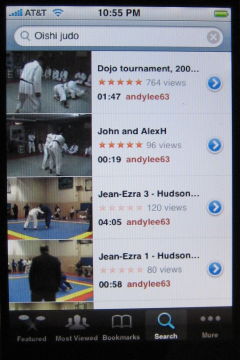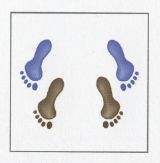Jeff wrote me yesterday with the following:
In a book on aikido, it is suggested that the three key elements of aikido (and so, I would suggest, any martial art or sport) are confidence, center and balance. Then the proper distance (maai in Japanese), then grip (for judo or aikido, but not for a striking art) and then the throws, locks, pins or chokes.
Your reaction?
Note that I'm just an ordinary judo player, not a general martial arts expert. Also, I haven't read the book Jeff mentioned, which means I'm responding completely out of context.
I can think of a lot of "key elements" of martial arts. Many of them are closely related, and the words for them often have overlapping or multiple meanings. Not to mention, "martial arts" means a lot of very different things to different people. I think trying to make a top-N list is an endless exercise — but not necessarily worthless. So here are the first two things I would have said.
For the number one thing, I wouldn't have said confidence so much as awareness, both inner and outer: knowing where you are, knowing what's going on around you, knowing your physical health and your state of mind, sensing the intentions of your opponent or opponents, and, very importantly, being able to keep up with changes in all the above as fast as they happen. Maintaining awareness in real time has to do with reflexes, and with your predictive abilities (based on experience), and it has to do with not overthinking, because if you think too much about what's happening now, you won't be able to keep up — it'll happen too fast.
In randori, I've noticed I'm not as aware as I used to be. Things happen that I don't see or feel coming, or if I do sense them, I get sort of befuddled by them. I think part of it is that I'm just older and my reflexes are naturally slower. At the same time, because I am older, people are playing me harder than when I was a kid. But I think there is an aspect I can improve. I think I've been charging in lately and thinking too much of imposing my will, without opening my senses to what my opponent is doing. Will Heinrich has described good randori as a kind of conversation. I think I haven't been a good listener lately in that conversation, and that's something I can work on. If nothing else, I should work on being aware of the other people playing randori, so we don't crash into each other. I used to be better about that too.
For the second "key element" of martial arts, I might have said "liveliness." In order to keep up with rapid change, your awareness has to be active, not passive — it could almost be described as a constant curiosity about your surroundings. In addition to liveliness in taking in information, you have to have a drive to express yourself in your outward actions, whether that self-expression means defending yourself against an attacker, performing a kata perfectly, or winning in shiai.
"Liveliness" could be described as "appetite." There's a great line in Enter the Dragon where Roper says, "A man's strength can be measured by his appetites. Indeed, a man's strength flows from his appetites." I have no idea whether that was Bruce Lee injecting real martial-arts wisdom into the script, or if it was just a catchy line meant to sum up Roper's character in a nutshell. But I liked it.
So if I were to advocate a martial-arts buzzphrase, it might be "lively awareness." Maybe somebody could argue, isn't that another way of saying "confidence and balance"? Then I might say that "confidence" is a tricky word, because it could be taken the wrong way: it shouldn't be a self-centered or misplaced confidence; it shouldn't be confused with bravado. And then somebody might explain that "confidence" (or whatever their number-one word is) is actually an imperfect translation of some Japanese word that means such-and-such.
What about compassion? Humility? Optimism? Tenacity? What about "beginner's mind"? What about that attitude that Sensei calls "happy face"? What about the two principles we judo players already have — mutual benefit and maximum efficiency? You can see how this could become an all-night discussion over dinner and beers.
No definitive answer will be reached. But as I said, I think it's worth thinking about this stuff from time to time, and besides, it's fun.
 [Photo credit:
[Photo credit: 
